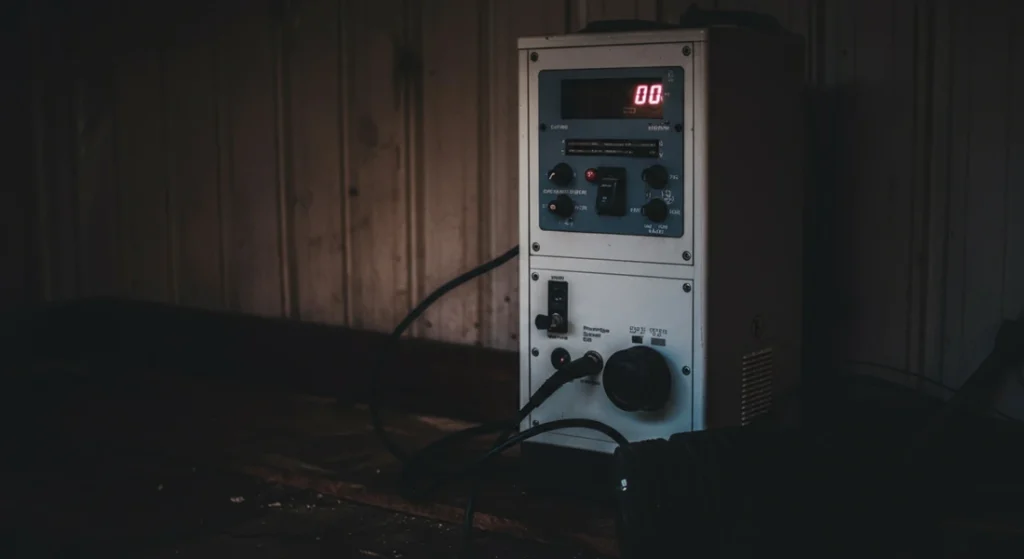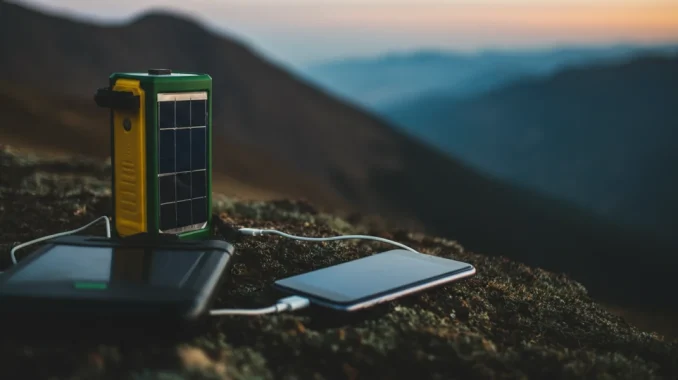During war, civil unrest, or extended blackouts, access to electricity can become unreliable or completely cut off. Without power, communication, heating, lighting, and even cooking become difficult. In some cases, losing power for an extended period can be life-threatening, especially during extreme weather or medical emergencies.
Having a reliable backup power source—whether it’s solar panels, batteries, or generators—can help keep your essential devices running. This guide will help you understand the best options, how to use them efficiently, and what mistakes to avoid.

Step 1: Choosing the Right Backup Power Solution
Before choosing a backup power source, consider these key factors:
- What do you need to power? Phones, radios, lights, medical devices, refrigerators, heating, or cooking appliances? Prioritizing essential devices will help manage limited power sources.
- How long do you need power? A few hours, days, or weeks? The longer the power outage, the more reliable and sustainable your backup source should be.
- How much fuel or sunlight is available in your location? Fuel shortages are common in crisis situations, and sunlight availability depends on the season and geography.
- Can you store your power source safely? Generators require proper ventilation, batteries need dry storage, and solar panels must be positioned for maximum sunlight.
Each power solution has strengths and weaknesses depending on the situation. Let’s explore them.
Step 2: Solar Power – Long-Term & Sustainable Backup
Solar power is one of the best long-term energy solutions in an emergency, especially during prolonged crises. It requires sunlight, but once set up, it provides free energy without needing fuel.
Advantages of Solar Power
- No fuel required – Works as long as there is sunlight, reducing dependency on scarce resources.
- Silent operation – Unlike generators, solar panels do not attract attention, which is crucial in conflict zones.
- Low maintenance – Once installed, they require little upkeep compared to fuel-based systems.
- Scalable – You can start with small panels and add more over time to increase capacity.
- Safe for indoor use – No emissions, making them ideal for residential and shelter setups.
Best Solar Options for Emergencies
- Portable Solar Chargers – Small, lightweight panels that can charge phones, radios, and power banks. Ideal for individual use in survival situations.
- Solar Power Stations – Large battery packs that store solar energy for lights, laptops, small appliances, and medical devices.
- Fixed Solar Panels + Battery Bank – A permanent setup for homes, capable of powering essential household items day and night.
How to Use Solar Power Efficiently
- Place panels in direct sunlight for maximum efficiency and reposition them throughout the day as needed.
- Use solar power to charge battery banks during daylight hours so power is available at night.
- Prioritize low-energy devices such as LED lights, radios, and small fans to extend battery life.
- Combine with other backup power sources, such as generators or batteries, to cover nighttime and cloudy-day needs.
What NOT to Do:
- Do not expect solar panels to work well on cloudy or winter days—efficiency drops significantly in poor weather conditions.
- Avoid cheap, low-quality solar panels that are inefficient and prone to breaking.
- Do not rely solely on solar if you are in an area with limited sunlight (dense urban centers, forests, or extreme northern climates in winter).
Step 3: Battery Packs – Silent, Portable Power Storage
Battery packs (or power banks) store energy and can be used without fuel or sunlight, making them perfect for short-term power outages or when you need to stay hidden and quiet.
Advantages of Battery Packs
- Portable and lightweight – Easy to carry in a backpack, car, or bug-out bag.
- Completely silent – Ideal for staying unnoticed in dangerous situations where noise could attract unwanted attention.
- Can be pre-charged – Stores power for later use, even if sunlight or fuel is unavailable.
- No emissions – Safe for indoor use and can power critical medical devices like CPAP machines or nebulizers.
Best Battery Backup Options
- Small Power Banks (10,000 – 30,000mAh) – Suitable for charging phones, radios, LED lights, and USB-powered devices.
- Mid-Sized Battery Packs (Portable Power Stations) – Can run laptops, small appliances, Wi-Fi routers, and low-energy medical devices.
- Large Battery Banks (Home Energy Storage) – Paired with solar panels, they can provide extended power to homes and small shelters.
How to Use Battery Packs Wisely
- Charge them whenever electricity is available—whether from the grid, solar panels, or generators.
- Use them only for critical devices such as communication (phones, radios) and essential lights.
- Avoid draining them completely—partial recharging extends the lifespan of lithium batteries.
- Keep them in a cool, dry place—extreme heat or cold reduces battery efficiency and longevity.
What NOT to Do:
- Do not use battery packs for high-power appliances such as heaters, stoves, or refrigerators—they will drain too quickly.
- Avoid overcharging or leaving batteries in direct sunlight—this can overheat and damage them.
- Do not rely on a single battery pack—have multiple for redundancy in case one fails.
Conclusion: Choosing the Best Backup Power for Your Needs
In a prolonged crisis, having reliable backup power is crucial. Each power source has its strengths, and the best option depends on your situation.
Final Recommendations:
- Solar power is ideal for long-term, fuel-free energy but requires sunlight.
- Battery packs are silent and portable, best for short-term power needs or stealth situations.
- Generators provide high power output, but they require fuel and make noise.
- A combination of power sources is best—solar panels for sustainability, batteries for portability, and generators for high energy needs.
- Reduce power consumption by using low-energy devices and prioritizing essential functions.
Be Prepared Before a Crisis Hits
The best time to set up a backup power system is before disaster strikes. Assess your needs, acquire the right equipment, and test your systems in advance. Having power in an emergency isn’t just convenient—it can save lives.




